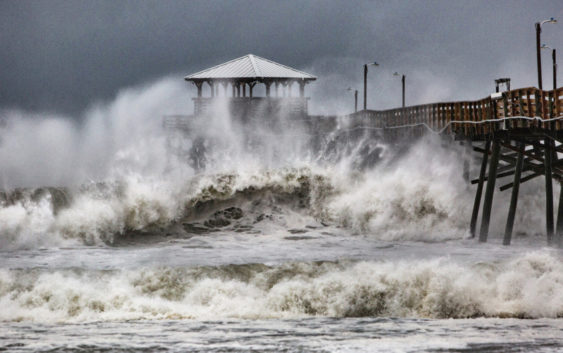- Here’s how Austin-area leaders are preparing for wildfire threats this summer
- Harris County sues Trump administration, cites threat to hurricane season preparedness
- Prescribed burn in Morrow Mountain aims to prevent future wildfires
- Prescribed burns aim to prevent wildfires in Stanly County
- Prepare for hurricane season with the Town of Leland Hurricane Expo
Meet the ‘weather weenies’ — the volunteers behind the hurricane professionals

Especially during extreme weather, television meteorologists get lots of attention. But behind every successful TV weather report there’s a quiet force of 20,000 dedicated amateurs.
Meet the “weather weenies,” a group of volunteers who diligently empty their rain gauges and record the results each morning.
They’re participating in the national Community Collaborative Rain, Hail & Snow Network, which goes by the acronym CoCoRaHS. The data these volunteers collect help fill in holes in the official record, making the work of meteorologists more accurate.
In North Carolina this week, even as Hurricane Florence battered the coast, more than 460 volunteers submitted reports, the network’s website shows.
Around 7 a.m. Friday, 24-hour totals greater than 10 inches flowed in from Emerald Isle, Morehead City, Newport and Bolivia. A volunteer in Swansboro recorded the most — 14.25 inches.
“Their gauge overflowed, so that was an under-report,” Noah Newman, the network’s education coordinator, said Friday. “They measured 3.25 before they went to bed, and they emptied it. And then this morning, the whole thing had overflowed, so they added 11 inches to that.”
The network relies on manual gauges because the measurements are more precise than the automated gauges people sometimes put on a rooftop, Newman said.
“Those are just notorious for not being accurate,” he said, “and so our network demands that they use a manual gauge that’s been approved by the National Weather Service.”
The network’s origin also relates to automated gauges. The instruments didn’t pick up a downpour that resulted in a deadly flash flood in Fort Collins, Colo., in July 1997. “The automated gauges were not basically seeing the amount of rain that was actually falling,” Newman said.
The other problem was too few gauges. “The National Weather Service only knew about what they thought were two inches of rainfall that were falling and really they were seven times that amount,” he said.
Afterward, the Colorado state climatologist launched the volunteer network, and it’s since spread to every state, Canada, Puerto Rico and the Bahamas, Newman said. In addition to monitoring rain gauges, volunteers submit narratives called significant weather reports to call attention to flooding, for example. Those reports can help meteorologists send out more timely warnings.
Bob Cole has been part of the network since CoCoRaHS launched in North Carolina in 2007. He sends in reports from his home in the North Carolina mountains of Transylvania County.
It’s an ideal place to observe the rainfall variability that makes the volunteer network so valuable, said Cole, who used to teach high school and college geography.
“I’ve got a friend who lives as the crow flies probably a half a mile from me, and our rain varies almost daily,” he said. “Across the valley, it can vary drastically. So what CoCoRaHS is trying to get is as dense a network as possible.”
Cole’s record rain measurement is 12 inches in a 24-hour period, he said. That came when Hurricane Fran passed through the area.
On Friday, he was watching Hurricane Florence and hoping to hear from his brother, who was riding out the storm on Pawleys Island.
Later in the day, Cole was planning to go out cloud-watching with his wife, who participates in group that shares pictures of unusual clouds. “It’s almost like birding,” he said.
Christopher Lumpp has been sending in weather reports from closer to Hurricane Florence. He is based in Nash County, where he coordinates other local volunteers.
Lumpp said he also reports on drought conditions and serves as a storm spotter for the National Weather Service. On top of that, he volunteers for a local fire department.
Katie Pfeil volunteers from Pender County, but on Friday, she wasn’t sending in reports. She had evacuated her home and was staying in a shelter in Rocky Mount.
Still, Pfeil was on the hunt for real-time, hyper-local weather information. Reached by phone Friday morning, she said she had heard a science teacher had a weather station nearby, and she was going to find out more.